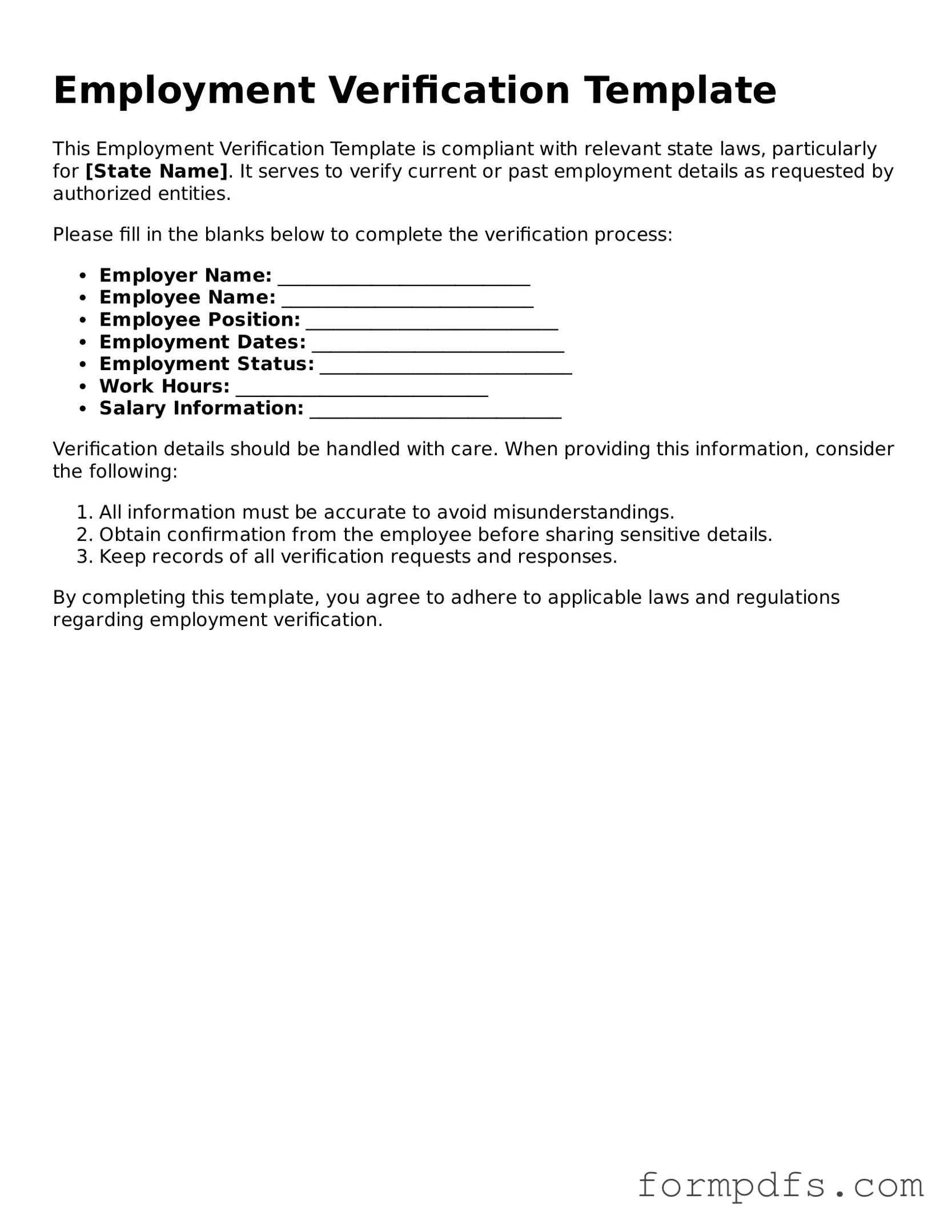The Employment Verification form plays a crucial role in the hiring process, serving as a key tool for employers to confirm the work history and qualifications of potential employees. This form typically requests essential details such as the applicant's previous job titles, dates of employment, and reasons for leaving. Employers often use it to assess the reliability and credibility of candidates, ensuring that they possess the necessary experience for the position they are applying for. Additionally, the form may include sections for the employer to provide insights into the employee's performance, attendance, and overall conduct while employed. By gathering this information, companies can make informed decisions that align with their hiring standards and organizational culture. Understanding the nuances of this form is vital for both employers and job seekers, as it can significantly impact the employment journey. Properly completing and submitting the Employment Verification form can facilitate smoother transitions into new roles and foster trust between all parties involved.
